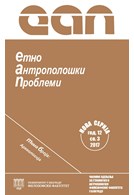Mumija - telo, starina ili lek?
Mummy – Body, Antiquity, or Medicine?
Author(s): Vera Vasiljević, Staša BabićSubject(s): Archaeology
Published by: Филозофски факултет, Универзитет у Београду
Keywords: mummification; human body; ecofact/artefact; reception of antiquity
Summary/Abstract: In the Renaissance Europe, along with the keen admiration for Egyptian antiquities, a custom has been recorded of production and consumption of a powder healing a number of ailments, produced by grating mummies. The practice extended into the 20th century. The belief in the remedial effects of this substance is derived from the Classical and Arabic written sources, and may have been augmented by the ideas about the mystical wisdom of the ancient Egyptians, running throughout the European history and originating among the Classical Greeks. This exceptional example raises the problem of various ways in which the material remains of the past are perceived and classified. In the case of an Egyptian mummy, the object is a human body prepared for Afterlife in a culturally specific manner. Reception of ancient Egypt in subsequent epochs shrouded the practice of mummification, along with other aspects of this culture, in the veil covering the original character of the materialized trace. A human body – ecofact, subjected to a ritualized treatment, thus became an antiquity – artefact, whose possession insured social prestige. At the same time, precisely because its culturalaffiliation, it was perceived as a source of healing powers, in the same way as some naturalsubstances derived from plants or animals. The case of the Egyptian mummy illustrates the porosity of demarcation lines between the material traces of the past categorised as natural/cultural, artefact/ecofact, further leading to specialized and insufficiently integrated archaeological interpretations.
Journal: Етноантрополошки проблеми
- Issue Year: 12/2017
- Issue No: 3
- Page Range: 785-800
- Page Count: 16
- Language: Serbian

